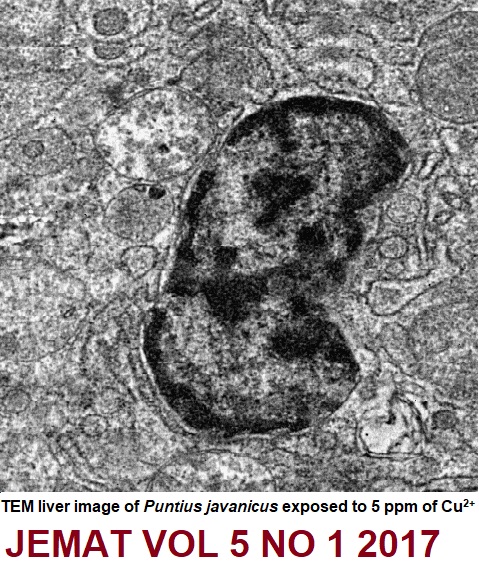A confidence interval comparison chart to assess the sensitivity of acetylcholinesterase from Hemibagrus nemurus as a source of enzyme for insecticides detection
DOI:
https://doi.org/10.54987/jemat.v5i1.416Keywords:
Acetylcholinesterase, Hemibagrus nemurus, Shukor’s chart, insecticides, inhibitive assayAbstract
In this work, the potential of acetylcholinesterase (AChE) from Hemibagrus nemurus (Baung) as a sensitive tool to detect the presence of insecticides was assessed. The affinity partially purified fraction was utilized as a source of AChE for in vitro assay of the effect of insecticides on the AChE. The resultant IC50 values were then compared with published results. An IC50 confidence interval comparison chart coined Shukor’s chart was utilized to compare the sensitivity of the AChE from H. nemurus to various other published results. In this chart, the IC50 confidence interval (95%) values for a particular insecticide is placed at one end of the chart and lined up with published values of IC50. Two lines are then made crossing the entire chart and represent the 95% confidence interval value for H. nemurus. Any confidence interval values for targeted insecticides from published results that do not touch these two lines are deemed significantly different (p<0.05), either more or less sensitive judging whether they fall below or above the two lines, respectively, whilst any confidence interval values that fall in or touch the two lines are deemed comparable in sensitivity.The results show that the AChE from H. nemurus is more sensitive to diazinonoxon and comparable in sensitivity compared to commercial and other local fish sources suggesting that the ACHE from H. nemurus can be a cheaper alternative for the current commercially and locally available AChEs.
Downloads
Published
How to Cite
Issue
Section
License
Authors who publish with this journal agree to the following terms:
- Authors retain copyright and grant the journal right of first publication with the work simultaneously licensed under a Creative Commons Attribution License (http://creativecommons.org/licenses/by/4.0) that allows others to share the work with an acknowledgement of the work's authorship and initial publication in this journal.
- Authors are able to enter into separate, additional contractual arrangements for the non-exclusive distribution of the journal's published version of the work (e.g., post it to an institutional repository or publish it in a book), with an acknowledgement of its initial publication in this journal.
- Authors are permitted and encouraged to post their work online (e.g., in institutional repositories or on their website) prior to and during the submission process, as it can lead to productive exchanges, as well as earlier and greater citation of published work (See The Effect of Open Access).


